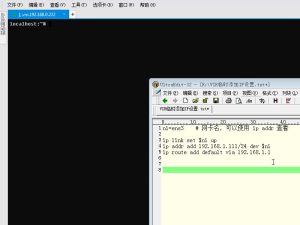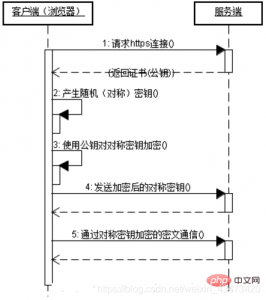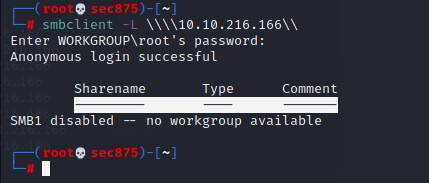Supported Instructions (支持的指令)
| Example Usage | 中文描述 | Description |
|---|---|---|
| add t1,t2,t3 | 加法:设 t1 为(t2 加 t3) | Addition: set t1 to (t2 plus t3) |
| addi t1,t2,-100 | 加法立即数:将 t1 设置为(t2 加上带符号的 12 位立即数) | Addition immediate: set t1 to (t2 plus signed 12-bit immediate) |
| and t1,t2,t3 | 按位与:将 t1 设置为 t2 和 t3 的按位与 | Bitwise AND : Set t1 to bitwise AND of t2 and t3 |
| andi t1,t2,-100 | 按位与立即数:将 t1 设置为 t2 的按位与和符号扩展的 12 位立即数 | Bitwise AND immediate : Set t1 to bitwise AND of t2 and sign-extended 12-bit immediate |
| auipc t1,10000 | 将高位立即数添加到 pc:将 t1 设置为(pc 加上高位 20 位立即数) | Add upper immediate to pc: set t1 to (pc plus an upper 20-bit immediate) |
| beq t1,t2,label | Branch if equal : 如果 t1 和 t2 相等则分支到标签地址处的语句 | Branch if equal : Branch to statement at label’s address if t1 and t2 are equal |
| bge t1,t2,label | Branch if greater than or equal:如果 t1 大于或等于 t2,则分支到标签地址处的语句 | Branch if greater than or equal: Branch to statement at label’s address if t1 is greater than or equal to t2 |
| bgeu t1,t2,label | Branch if greater than or equal to (unsigned):如果 t1 大于或等于 t2,则分支到标签地址处的语句(无符号解释) | Branch if greater than or equal to (unsigned): Branch to statement at label’s address if t1 is greater than or equal to t2 (with an unsigned interpretation) |
| blt t1,t2,label | Branch if less than:如果 t1 小于 t2,则分支到标签地址处的语句 | Branch if less than: Branch to statement at label’s address if t1 is less than t2 |
| bltu t1,t2,label | Branch if less than (unsigned):如果 t1 小于 t2,则分支到标签地址处的语句(无符号解释) | Branch if less than (unsigned): Branch to statement at label’s address if t1 is less than t2 (with an unsigned interpretation) |
| bne t1,t2,label | Branch if not equal : 如果 t1 和 t2 不相等则分支到标签地址处的语句 | Branch if not equal : Branch to statement at label’s address if t1 and t2 are not equal |
| csrrc t0, fcsr, t1 | 原子读取/清除 CSR:从 CSR 读取到 t0 并根据 t1 清除 CSR 的位 | Atomic Read/Clear CSR: read from the CSR into t0 and clear bits of the CSR according to t1 |
| csrrci t0, fcsr, 10 | 立即原子读取/清除 CSR:从 CSR 读取到 t0 并根据常量清除 CSR 的位 | Atomic Read/Clear CSR Immediate: read from the CSR into t0 and clear bits of the CSR according to a constant |
| csrrs t0, fcsr, t1 | 原子读取/设置 CSR:从 CSR 读取到 t0 并将逻辑或 t1 读取到 CSR | Atomic Read/Set CSR: read from the CSR into t0 and logical or t1 into the CSR |
| csrrsi t0, fcsr, 10 | 立即原子读取/设置 CSR:从 CSR 读取到 t0 并将逻辑或常量读取到 CSR | Atomic Read/Set CSR Immediate: read from the CSR into t0 and logical or a constant into the CSR |
| csrrw t0, fcsr, t1 | 原子读/写 CSR:从 CSR 读入 t0 并将 t1 写入 CSR | Atomic Read/Write CSR: read from the CSR into t0 and write t1 into the CSR |
| csrrwi t0, fcsr, 10 | 原子读/写 CSR 立即:从 CSR 读取到 t0 并将常量写入 CSR | Atomic Read/Write CSR Immediate: read from the CSR into t0 and write a constant into the CSR |
| div t1,t2,t3 | 除法:将 t1 设置为 t2/t3 的结果 | Division: set t1 to the result of t2/t3 |
| divu t1,t2,t3 | 除法:使用无符号除法将 t1 设置为 t2/t3 的结果 | Division: set t1 to the result of t2/t3 using unsigned division |
| ebreak | 暂停执行 | Pause execution |
| ecall | 发出系统调用:执行a7中值指定的系统调用 | Issue a system call : Execute the system call specified by value in a7 |
| fadd.d f1, f2, f3, dyn | 浮动 ADD(64 位):将 f1 分配给 f2 + f3 | Floating ADD (64 bit): assigns f1 to f2 + f3 |
| fadd.s f1, f2, f3, dyn | 浮动 ADD:将 f1 分配给 f2 + f3 | Floating ADD: assigns f1 to f2 + f3 |
| fclass.d t1, f1 | 对一个浮点数(64位)进行分类 | Classify a floating point number (64 bit) |
| fclass.s t1, f1 | 对一个浮点数进行分类 | Classify a floating point number |
| fcvt.d.s t1, f1, dyn | 将 float 转换为 double:将 f2 的值分配给 f1 | Convert a float to a double: Assigned the value of f2 to f1 |
| fcvt.d.w f1, t1, dyn | 从整数转换为双精度:将 t1 的值赋给 f1 | Convert double from integer: Assigns the value of t1 to f1 |
| fcvt.d.wu f1, t1, dyn | 从无符号整数转换双精度数:将 t1 的值赋给 f1 | Convert double from unsigned integer: Assigns the value of t1 to f1 |
| fcvt.s.d t1, f1, dyn | 将双精度型转换为浮点型:将 f2 的值分配给 f1 | Convert a double to a float: Assigned the value of f2 to f1 |
| fcvt.s.w f1, t1, dyn | 从整数转换为浮点数:将 t1 的值赋给 f1 | Convert float from integer: Assigns the value of t1 to f1 |
| fcvt.s.wu f1, t1, dyn | 从无符号整数转换浮点数:将 t1 的值赋给 f1 | Convert float from unsigned integer: Assigns the value of t1 to f1 |
| fcvt.w.d t1, f1, dyn | 从双精度转换整数:将 f1 的值(四舍五入)分配给 t1 | Convert integer from double: Assigns the value of f1 (rounded) to t1 |
| fcvt.w.s t1, f1, dyn | 从浮点数转换整数:将 f1 的值(四舍五入)赋值给 t1 | Convert integer from float: Assigns the value of f1 (rounded) to t1 |
| fcvt.wu.d t1, f1, dyn | 从 double 转换未签名的整数:将 f1 的值(四舍五入)分配给 t1 | Convert unsinged integer from double: Assigns the value of f1 (rounded) to t1 |
| fcvt.wu.s t1, f1, dyn | 将浮点数转换为无符号整数:将 f1 的值(四舍五入)赋值给 t1 | Convert unsinged integer from float: Assigns the value of f1 (rounded) to t1 |
| fdiv.d f1, f2, f3, dyn | 浮动 DIVide(64 位):将 f1 分配给 f2 / f3 | Floating DIVide (64 bit): assigns f1 to f2 / f3 |
| fdiv.s f1, f2, f3, dyn | 浮动 DIVide:将 f1 分配给 f2 / f3 | Floating DIVide: assigns f1 to f2 / f3 |
| fence 1, 1 | 确保围栏之前的 IO 和内存访问发生在不同线程查看的以下 IO 和内存访问之前 | Ensure that IO and memory accesses before the fence happen before the following IO and memory accesses as viewed by a different thread |
| fence.i | 确保指令存储器的存储对指令提取可见 | Ensure that stores to instruction memory are visible to instruction fetches |
| feq.d t1, f1, f2 | Floating EQuals(64 位):如果 f1 = f2,则将 t1 设置为 1,否则将 t1 设置为 0 | Floating EQuals (64 bit): if f1 = f2, set t1 to 1, else set t1 to 0 |
| feq.s t1, f1, f2 | 浮动相等:如果 f1 = f2,则将 t1 设置为 1,否则将 t1 设置为 0 | Floating EQuals: if f1 = f2, set t1 to 1, else set t1 to 0 |
| fld f1, -100(t1) | 从内存中加载一个 double | Load a double from memory |
| fle.d t1, f1, f2 | 小于或等于浮动(64 位):如果 f1 <= f2,则将 t1 设置为 1,否则将 t1 设置为 0 | Floating Less than or Equals (64 bit): if f1 <= f2, set t1 to 1, else set t1 to 0 |
| fle.s t1, f1, f2 | 浮动小于或等于:如果 f1 <= f2,则将 t1 设置为 1,否则将 t1 设置为 0 | Floating Less than or Equals: if f1 <= f2, set t1 to 1, else set t1 to 0 |
| flt.d t1, f1, f2 | 小于浮动(64 位):如果 f1 < f2,则将 t1 设置为 1,否则将 t1 设置为 0 | Floating Less Than (64 bit): if f1 < f2, set t1 to 1, else set t1 to 0 |
| flt.s t1, f1, f2 | 浮动小于:如果 f1 < f2,则将 t1 设置为 1,否则将 t1 设置为 0 | Floating Less Than: if f1 < f2, set t1 to 1, else set t1 to 0 |
| flw f1, -100(t1) | 从内存中加载一个浮点数 | Load a float from memory |
| fmadd.d f1, f2, f3, f4, dyn | 融合乘加(64 位):将 f2*f3+f4 分配给 f1 | Fused Multiply Add (64 bit): Assigns f2*f3+f4 to f1 |
| fmadd.s f1, f2, f3, f4, dyn | 融合乘加:将 f2*f3+f4 分配给 f1 | Fused Multiply Add: Assigns f2*f3+f4 to f1 |
| fmax.d f1, f2, f3 | Floating MAXimum(64 位):将 f1 分配给 f1 和 f3 中的较大者 | Floating MAXimum (64 bit): assigns f1 to the larger of f1 and f3 |
| fmax.s f1, f2, f3 | Floating MAXimum:将 f1 分配给 f1 和 f3 中的较大者 | Floating MAXimum: assigns f1 to the larger of f1 and f3 |
| fmin.d f1, f2, f3 | Floating MINimum(64 位):将 f1 分配给 f1 和 f3 中的较小者 | Floating MINimum (64 bit): assigns f1 to the smaller of f1 and f3 |
| fmin.s f1, f2, f3 | Floating MINimum:将 f1 分配给 f1 和 f3 中较小的一个 | Floating MINimum: assigns f1 to the smaller of f1 and f3 |
| fmsub.d f1, f2, f3, f4, dyn | 融合乘子:将 f2*f3-f4 分配给 f1 | Fused Multiply Subatract: Assigns f2*f3-f4 to f1 |
| fmsub.s f1, f2, f3, f4, dyn | 融合乘子:将 f2*f3-f4 分配给 f1 | Fused Multiply Subatract: Assigns f2*f3-f4 to f1 |
| fmul.d f1, f2, f3, dyn | Floating MULtiply(64 位):将 f1 分配给 f2 * f3 | Floating MULtiply (64 bit): assigns f1 to f2 * f3 |
| fmul.s f1, f2, f3, dyn | Floating MULtiply:将 f1 分配给 f2 * f3 | Floating MULtiply: assigns f1 to f2 * f3 |
| fmv.s.x f1, t1 | 移动浮点数:从整数寄存器中移动表示浮点数的位 | Move float: move bits representing a float from an integer register |
| fmv.x.s t1, f1 | 移动浮点数:将表示浮点数的位移动到整数寄存器 | Move float: move bits representing a float to an integer register |
| fnmadd.d f1, f2, f3, f4, dyn | Fused Negate Multiply Add(64 位):将 -(f2*f3+f4) 分配给 f1 | Fused Negate Multiply Add (64 bit): Assigns -(f2*f3+f4) to f1 |
| fnmadd.s f1, f2, f3, f4, dyn | Fused Negate Multiply Add:将 -(f2*f3+f4) 分配给 f1 | Fused Negate Multiply Add: Assigns -(f2*f3+f4) to f1 |
| fnmsub.d f1, f2, f3, f4, dyn | 融合取反乘法减法:将 -(f2*f3-f4) 赋值给 f1 | Fused Negated Multiply Subatract: Assigns -(f2*f3-f4) to f1 |
| fnmsub.s f1, f2, f3, f4, dyn | 融合取反乘法减法:将 -(f2*f3-f4) 赋值给 f1 | Fused Negated Multiply Subatract: Assigns -(f2*f3-f4) to f1 |
| fsd f1, -100(t1) | 将双精度存储到内存 | Store a double to memory |
| fsgnj.d f1, f2, f3 | 浮点符号注入(64位):将f2的符号位替换为f3的符号位赋值给f1 | Floating point sign injection (64 bit): replace the sign bit of f2 with the sign bit of f3 and assign it to f1 |
| fsgnj.s f1, f2, f3 | 浮点符号注入:将f2的符号位替换为f3的符号位赋值给f1 | Floating point sign injection: replace the sign bit of f2 with the sign bit of f3 and assign it to f1 |
| fsgnjn.d f1, f2, f3 | 浮点符号注入(反转64位):将f2的符号位替换为f3的相反符号位赋值给f1 | Floating point sign injection (inverted 64 bit): replace the sign bit of f2 with the opposite of sign bit of f3 and assign it to f1 |
| fsgnjn.s f1, f2, f3 | 浮点符号注入(倒置):将f2的符号位替换为f3的相反符号位赋值给f1 | Floating point sign injection (inverted): replace the sign bit of f2 with the opposite of sign bit of f3 and assign it to f1 |
| fsgnjx.d f1, f2, f3 | 浮点符号注入(xor 64 bit):将f2的符号位与f3的符号位异或赋值给f1 | Floating point sign injection (xor 64 bit): xor the sign bit of f2 with the sign bit of f3 and assign it to f1 |
| fsgnjx.s f1, f2, f3 | 浮点符号注入(xor):将f2的符号位与f3的符号位异或赋值给f1 | Floating point sign injection (xor): xor the sign bit of f2 with the sign bit of f3 and assign it to f1 |
| fsqrt.d f1, f2, dyn | 浮动平方根(64 位):将 f1 分配给 f2 的平方根 | Floating SQuare RooT (64 bit): Assigns f1 to the square root of f2 |
| fsqrt.s f1, f2, dyn | 浮动平方根:将 f1 分配给 f2 的平方根 | Floating SQuare RooT: Assigns f1 to the square root of f2 |
| fsub.d f1, f2, f3, dyn | 浮动减法(64 位):将 f1 分配给 f2 – f3 | Floating SUBtract (64 bit): assigns f1 to f2 – f3 |
| fsub.s f1, f2, f3, dyn | 浮动减法:将 f1 分配给 f2 – f3 | Floating SUBtract: assigns f1 to f2 – f3 |
| fsw f1, -100(t1) | 将浮点数存储到内存中 | Store a float to memory |
| jal t1, target | 跳转和链接:将 t1 设置为程序计数器(返回地址),然后跳转到目标地址处的语句 | Jump and link : Set t1 to Program Counter (return address) then jump to statement at target address |
| jalr t1, t2, -100 | 跳转和链接寄存器:将 t1 设置为程序计数器(返回地址),然后跳转到 t2 + 立即数处的语句 | Jump and link register: Set t1 to Program Counter (return address) then jump to statement at t2 + immediate |
| lb t1, -100(t2) | 将 t1 设置为有效内存字节地址的符号扩展 8 位值 | Set t1 to sign-extended 8-bit value from effective memory byte address |
| lbu t1, -100(t2) | 将 t1 设置为从有效内存字节地址开始的零扩展 8 位值 | Set t1 to zero-extended 8-bit value from effective memory byte address |
| lh t1, -100(t2) | 将 t1 设置为有效内存半字地址的符号扩展 16 位值 | Set t1 to sign-extended 16-bit value from effective memory halfword address |
| lhu t1, -100(t2) | 将 t1 设置为有效内存半字地址的零扩展 16 位值 | Set t1 to zero-extended 16-bit value from effective memory halfword address |
| lui t1,10000 | 加载高立即数:将 t1 设置为 20 位后跟 12 个 0 | Load upper immediate: set t1 to 20-bit followed by 12 0s |
| lw t1, -100(t2) | 将 t1 设置为有效内存字地址的内容 | Set t1 to contents of effective memory word address |
| mul t1,t2,t3 | 乘法:将t1设为t2*t3的低32位 | Multiplication: set t1 to the lower 32 bits of t2*t3 |
| mulh t1,t2,t3 | 乘法:使用有符号乘法将 t1 设置为 t2*t3 的高 32 位 | Multiplication: set t1 to the upper 32 bits of t2*t3 using signed multiplication |
| mulhsu t1,t2,t3 | 乘法:将 t1 设置为 t2*t3 的高 32 位,其中 t2 是有符号的,t3 是无符号的 | Multiplication: set t1 to the upper 32 bits of t2*t3 where t2 is signed and t3 is unsigned |
| mulhu t1,t2,t3 | 乘法:使用无符号乘法将 t1 设置为 t2*t3 的高 32 位 | Multiplication: set t1 to the upper 32 bits of t2*t3 using unsigned multiplication |
| or t1,t2,t3 | 按位或:将 t1 设置为 t2 和 t3 的按位或 | Bitwise OR : Set t1 to bitwise OR of t2 and t3 |
| ori t1,t2,-100 | 按位或立即数:将 t1 设置为 t2 和符号扩展的 12 位立即数的按位或 | Bitwise OR immediate : Set t1 to bitwise OR of t2 and sign-extended 12-bit immediate |
| rem t1,t2,t3 | 余数:将 t1 设置为 t2/t3 的余数 | Remainder: set t1 to the remainder of t2/t3 |
| remu t1,t2,t3 | 余数:使用无符号除法将 t1 设置为 t2/t3 的余数 | Remainder: set t1 to the remainder of t2/t3 using unsigned division |
| sb t1, -100(t2) | Store byte : 将t1的低8位存入有效内存字节地址 | Store byte : Store the low-order 8 bits of t1 into the effective memory byte address |
| sh t1, -100(t2) | Store halfword : 将t1的低16位存入有效内存半字地址 | Store halfword : Store the low-order 16 bits of t1 into the effective memory halfword address |
| sll t1,t2,t3 | 左移逻辑:将 t1 设置为将 t2 左移 t3 的低 5 位中的值指定的位数的结果 | Shift left logical: Set t1 to result of shifting t2 left by number of bits specified by value in low-order 5 bits of t3 |
| slli t1,t2,10 | 左移逻辑:将 t1 设置为将 t2 左移 immediate 指定的位数的结果 | Shift left logical : Set t1 to result of shifting t2 left by number of bits specified by immediate |
| slt t1,t2,t3 | 设置小于:如果 t2 小于 t3,则将 t1 设置为 1,否则将 t1 设置为 0 | Set less than : If t2 is less than t3, then set t1 to 1 else set t1 to 0 |
| slti t1,t2,-100 | 设置小于立即数:如果 t2 小于符号扩展的 12 位立即数,则将 t1 设置为 1,否则将 t1 设置为 0 | Set less than immediate : If t2 is less than sign-extended 12-bit immediate, then set t1 to 1 else set t1 to 0 |
| sltiu t1,t2,-100 | 设置小于无符号立即数:如果 t2 小于使用无符号比较进行符号扩展的 16 位立即数,则将 t1 设置为 1,否则将 t1 设置为 0 | Set less than immediate unsigned : If t2 is less than sign-extended 16-bit immediate using unsigned comparison, then set t1 to 1 else set t1 to 0 |
| sltu t1,t2,t3 | 设置小于:如果使用无符号比较 t2 小于 t3,则将 t1 设置为 1,否则将 t1 设置为 0 | Set less than : If t2 is less than t3 using unsigned comparision, then set t1 to 1 else set t1 to 0 |
| sra t1,t2,t3 | 右移算法:将 t1 设置为将 t2 符号扩展右移的结果,其位数由 t3 的低 5 位中的值指定 | Shift right arithmetic: Set t1 to result of sign-extended shifting t2 right by number of bits specified by value in low-order 5 bits of t3 |
| srai t1,t2,10 | 右移算术:将 t1 设置为将 t2 符号扩展右移立即数指定的位数的结果 | Shift right arithmetic : Set t1 to result of sign-extended shifting t2 right by number of bits specified by immediate |
| srl t1,t2,t3 | 右移逻辑:将 t1 设置为将 t2 右移 t3 的低 5 位中的值指定的位数的结果 | Shift right logical: Set t1 to result of shifting t2 right by number of bits specified by value in low-order 5 bits of t3 |
| srli t1,t2,10 | 右移逻辑:将 t1 设置为将 t2 右移 immediate 指定的位数的结果 | Shift right logical : Set t1 to result of shifting t2 right by number of bits specified by immediate |
| sub t1,t2,t3 | 减法:将 t1 设置为(t2 减去 t3) | Subtraction: set t1 to (t2 minus t3) |
| sw t1, -100(t2) | Store word:将t1的内容存入有效内存字地址 | Store word : Store contents of t1 into effective memory word address |
| uret | 从处理中断或异常返回(到 uepc) | Return from handling an interrupt or exception (to uepc) |
| wfi | 等待中断 | Wait for Interrupt |
| xor t1,t2,t3 | 按位异或:将 t1 设置为 t2 和 t3 的按位异或 | Bitwise XOR : Set t1 to bitwise XOR of t2 and t3 |
| xori t1,t2,-100 | 按位异或立即数:将 t1 设置为 t2 和符号扩展的 12 位立即数的按位异或 | Bitwise XOR immediate : Set t1 to bitwise XOR of t2 and sign-extended 12-bit immediate |
Supported psuedo-instructions (支持的伪指令)
| Example Usage | 中文描述 | Description |
|---|---|---|
| addi t1,t2,%lo(label) | Load Lower Address : 设置 t1 到 t2 + 低 12 位标签地址 | Load Lower Address : Set t1 to t2 + lower 12-bit label’s address |
| b label | Branch : 无条件分支到标签处的语句 | Branch : Branch to statement at label unconditionally |
| beqz t1,label | Branch if EQual Zero :如果 t1 == 0 则分支到标签处的语句 | Branch if EQual Zero : Branch to statement at label if t1 == 0 |
| bgez t1,label | Branch if Greater than or Equal to Zero :如果 t1 >= 0,则分支到标签处的语句 | Branch if Greater than or Equal to Zero : Branch to statement at label if t1 >= 0 |
| bgt t1,t2,label | Branch if Greater Than :如果 t1 > t2 则分支到标签处的语句 | Branch if Greater Than : Branch to statement at label if t1 > t2 |
| bgtu t1,t2,label | Branch if Greater Than Unsigned:如果 t1 > t2(无符号比较)则分支到标签处的语句 | Branch if Greater Than Unsigned: Branch to statement at label if t1 > t2 (unsigned compare) |
| bgtz t1,label | Branch if Greater Than:如果 t1 > 0,则分支到标签处的语句 | Branch if Greater Than: Branch to statement at label if t1 > 0 |
| ble t1,t2,label | Branch if Less or Equal :如果 t1 <= t2 则分支到标签处的语句 | Branch if Less or Equal : Branch to statement at label if t1 <= t2 |
| bleu t1,t2,label | Branch if Less or Equal Unsigned:如果 t1 <= t2(无符号比较),则分支到标签处的语句 | Branch if Less or Equal Unsigned : Branch to statement at label if t1 <= t2 (unsigned compare) |
| blez t1,label | Branch if Less than or Equal to Zero:如果 t1 <= 0,则分支到标签处的语句 | Branch if Less than or Equal to Zero : Branch to statement at label if t1 <= 0 |
| bltz t1,label | 如果小于零则分支:如果 t1 < 0,则分支到标签处的语句 | Branch if Less Than Zero : Branch to statement at label if t1 < 0 |
| bnez t1,label | Branch if Not Equal Zero:如果 t1 != 0,则分支到标签处的语句 | Branch if Not Equal Zero : Branch to statement at label if t1 != 0 |
| call label | CALL:调用远处的子程序 | CALL: call a far-away subroutine |
| csrc t1, fcsr | 清除控制和状态寄存器中的位 | Clear bits in control and status register |
| csrci fcsr, 100 | 清除控制和状态寄存器中的位 | Clear bits in control and status register |
| csrr t1, fcsr | 读取控制和状态寄存器 | Read control and status register |
| csrs t1, fcsr | 设置控制和状态寄存器中的位 | Set bits in control and status register |
| csrsi fcsr, 100 | 设置控制和状态寄存器中的位 | Set bits in control and status register |
| csrw t1, fcsr | 写控制和状态寄存器 | Write control and status register |
| csrwi fcsr, 100 | 写控制和状态寄存器 | Write control and status register |
| fabs.d f1, f2 | 将 f1 设置为 f2 的绝对值(64 位) | Set f1 to the absolute value of f2 (64 bit) |
| fabs.s f1, f2 | 将 f1 设置为 f2 的绝对值 | Set f1 to the absolute value of f2 |
| fadd.d f1, f2, f3 | 浮动 ADD(64 位):将 f1 分配给 f2 + f3 | Floating ADD (64 bit): assigns f1 to f2 + f3 |
| fadd.s f1, f2, f3 | 浮动 ADD:将 f1 分配给 f2 + f3 | Floating ADD: assigns f1 to f2 + f3 |
| fcvt.d.s f1, f2 | 将float转为double:将f2的值赋值给f1 | Convert float to double: Assigned the value of f2 to f1 |
| fcvt.d.w f1, t1 | 从有符号整数转换双精度数:将 t1 的值赋给 f1 | Convert double from signed integer: Assigns the value of t1 to f1 |
| fcvt.d.wu f1, t1 | 从无符号整数转换双精度数:将 t1 的值赋给 f1 | Convert double from unsigned integer: Assigns the value of t1 to f1 |
| fcvt.s.d f1, f2 | double转float:将f2的值赋值给f1 | Convert double to float: Assigned the value of f2 to f1 |
| fcvt.s.w f1, t1 | 从有符号整数转换浮点数:将 t1 的值赋给 f1 | Convert float from signed integer: Assigns the value of t1 to f1 |
| fcvt.s.wu f1, t1 | 从无符号整数转换浮点数:将 t1 的值赋给 f1 | Convert float from unsigned integer: Assigns the value of t1 to f1 |
| fcvt.w.d t1, f1 | 从双精度转换有符号整数:将 f1 的值(四舍五入)分配给 t1 | Convert signed integer from double: Assigns the value of f1 (rounded) to t1 |
| fcvt.w.s t1, f1 | 从浮点数转换有符号整数:将 f1 的值(四舍五入)赋值给 t1 | Convert signed integer from float: Assigns the value of f1 (rounded) to t1 |
| fcvt.wu.d t1, f1 | 从双精度转换无符号整数:将 f1 的值(四舍五入)分配给 t1 | Convert unsigned integer from double: Assigns the value of f1 (rounded) to t1 |
| fcvt.wu.s t1, f1 | 从浮点数转换无符号整数:将 f1 的值(四舍五入)赋值给 t1 | Convert unsigned integer from float: Assigns the value of f1 (rounded) to t1 |
| fdiv.d f1, f2, f3 | 浮动 DIVide(64 位):将 f1 分配给 f2 / f3 | Floating DIVide (64 bit): assigns f1 to f2 / f3 |
| fdiv.s f1, f2, f3 | 浮动 DIVide:将 f1 分配给 f2 / f3 | Floating DIVide: assigns f1 to f2 / f3 |
| fge.d t1, f2, f3 | 浮动大于或等于(64 位):如果 f1 >= f2,则将 t1 设置为 1,否则将 t1 设置为 0 | Floating Greater Than or Equal (64 bit): if f1 >= f2, set t1 to 1, else set t1 to 0 |
| fge.s t1, f2, f3 | 浮动大于或等于:如果 f1 >= f2,则将 t1 设置为 1,否则将 t1 设置为 0 | Floating Greater Than or Equal: if f1 >= f2, set t1 to 1, else set t1 to 0 |
| fgt.d t1, f2, f3 | 浮动大于(64 位):如果 f1 > f2,则将 t1 设置为 1,否则将 t1 设置为 0 | Floating Greater Than (64 bit): if f1 > f2, set t1 to 1, else set t1 to 0 |
| fgt.s t1, f2, f3 | 浮动大于:如果 f1 > f2,则将 t1 设置为 1,否则将 t1 设置为 0 | Floating Greater Than: if f1 > f2, set t1 to 1, else set t1 to 0 |
| fld f1,(t2) | Load Word:将f1设置为从有效内存字地址开始的64位值 | Load Word: Set f1 to 64-bit value from effective memory word address |
| fld f1,-100 | Load Word:将f1设置为从有效内存字地址开始的64位值 | Load Word: Set f1 to 64-bit value from effective memory word address |
| fld f1,10000000,t3 | Load Word:使用 t3 作为临时地址,将 f1 设置为有效内存字地址的 64 位值 | Load Word: Set f1 to 64-bit value from effective memory word address using t3 as a temporary |
| fld f1,label, t3 | Load Word:使用 t3 作为临时地址,将 f1 设置为有效内存字地址的 64 位值 | Load Word: Set f1 to 64-bit value from effective memory word address using t3 as a temporary |
| flw f1,%lo(label)(t2) | 从地址加载 | Load from Address |
| flw f1,(t2) | 加载字协处理器 1:将 f1 设置为有效内存字地址的 32 位值 | Load Word Coprocessor 1 : Set f1 to 32-bit value from effective memory word address |
| flw f1,-100 | 加载字协处理器 1:将 f1 设置为有效内存字地址的 32 位值 | Load Word Coprocessor 1 : Set f1 to 32-bit value from effective memory word address |
| flw f1,10000000,t3 | 加载字协处理器 1:使用 t3 作为临时地址,将 f1 设置为有效内存字地址的 32 位值 | Load Word Coprocessor 1 : Set f1 to 32-bit value from effective memory word address using t3 as a temporary |
| flw f1,label, t3 | 加载字协处理器 1:使用 t3 作为临时地址,将 f1 设置为有效内存字地址的 32 位值 | Load Word Coprocessor 1 : Set f1 to 32-bit value from effective memory word address using t3 as a temporary |
| flwd f1,%lo(label)(t2) | 从地址加载 | Load from Address |
| fmadd.d f1, f2, f3, f4 | 融合乘加(64 位):将 f2*f3+f4 分配给 f1 | Fused Multiply Add (64 bit): Assigns f2*f3+f4 to f1 |
| fmadd.s f1, f2, f3, f4 | 融合乘加:将 f2*f3+f4 分配给 f1 | Fused Multiply Add: Assigns f2*f3+f4 to f1 |
| fmsub.d f1, f2, f3, f4 | 融合乘法减法(64 位):将 f2*f3-f4 分配给 f1 | Fused Multiply Subatract (64 bit): Assigns f2*f3-f4 to f1 |
| fmsub.s f1, f2, f3, f4 | 融合乘子:将 f2*f3-f4 分配给 f1 | Fused Multiply Subatract: Assigns f2*f3-f4 to f1 |
| fmul.d f1, f2, f3 | Floating MULtiply(64 位):将 f1 分配给 f2 * f3 | Floating MULtiply (64 bit): assigns f1 to f2 * f3 |
| fmul.s f1, f2, f3 | Floating MULtiply:将 f1 分配给 f2 * f3 | Floating MULtiply: assigns f1 to f2 * f3 |
| fmv.d f1, f2 | 将 f2 的值移动到 f1(64 位) | Move the value of f2 to f1 (64 bit) |
| fmv.s f1, f2 | 将 f2 的值移动到 f1 | Move the value of f2 to f1 |
| fmv.w.x t1, f1 | 移动浮点数(新助记符):从整数寄存器中移动表示浮点数的位 | Move float (New mnemonic): move bits representing a float from an integer register |
| fmv.x.w t1, f1 | 移动浮点数(新助记符):将表示浮点数的位移动到整数寄存器 | Move float (New mnemonic): move bits representing a float to an integer register |
| fneg.d f1, f2 | 将 f1 设置为 f2 的否定(64 位) | Set f1 to the negation of f2 (64 bit) |
| fneg.s f1, f2 | 将 f1 设置为 f2 的否定 | Set f1 to the negation of f2 |
| fnmadd.d f1, f2, f3, f4 | Fused Negate Multiply Add(64 位):将 -(f2*f3+f4) 分配给 f1 | Fused Negate Multiply Add (64 bit): Assigns -(f2*f3+f4) to f1 |
| fnmadd.s f1, f2, f3, f4 | Fused Negate Multiply Add:将 -(f2*f3+f4) 分配给 f1 | Fused Negate Multiply Add: Assigns -(f2*f3+f4) to f1 |
| fnmsub.d f1, f2, f3, f4 | 融合取反乘法减法(64 位):将 -(f2*f3-f4) 分配给 f1 | Fused Negated Multiply Subatract (64 bit): Assigns -(f2*f3-f4) to f1 |
| fnmsub.s f1, f2, f3, f4 | 融合取反乘法减法:将 -(f2*f3-f4) 赋值给 f1 | Fused Negated Multiply Subatract: Assigns -(f2*f3-f4) to f1 |
| frcsr t1 | 读取 FP 控制/状态寄存器 | Read FP control/status register |
| frflags t1 | 读取 FP 异常标志 | Read FP exception flags |
| frrm t1 | 读取 FP 舍入模式 | Read FP rounding mode |
| frsr t1 | frcsr t1 的别名 | Alias for frcsr t1 |
| fscsr t1 | 写 FP 控制/状态寄存器 | Write FP control/status register |
| fscsr t1, t2 | 交换 FP 控制/状态寄存器 | Swap FP control/status register |
| fsd f1,(t2) | Store Word:将f1中的64位值存储到有效内存字地址 | Store Word: Store 64-bit value from f1 to effective memory word address |
| fsd f1,-100 | Store Word:将f1中的64位值存储到有效内存字地址 | Store Word: Store 64-bit value from f1 to effective memory word address |
| fsd f1,10000000,t3 | Store Word:将64位值从f1存储到有效内存字地址,使用t3作为临时地址 | Store Word: Store 64-bit value from f1 to effective memory word address using t3 as a temporary |
| fsd f1,label, t3 | Store Word:将64位值从f1存储到有效内存字地址,使用t3作为临时地址 | Store Word: Store 64-bit value from f1 to effective memory word address using t3 as a temporary |
| fsflags t1 | 写入 FP 异常标志 | Write FP exception flags |
| fsflags t1, t2 | 交换 FP 异常标志 | Swap FP exception flags |
| fsflagsi 100 | 立即写入 FP 异常标志 | Write FP exception flags, immediate |
| fsflagsi t1, 100 | 立即交换 FP 异常标志 | Swap FP exception flags, immediate |
| fsqrt.d f1, f2 | 浮动平方根(64 位):将 f1 分配给 f2 的平方根 | Floating SQuare RooT (64 bit): Assigns f1 to the square root of f2 |
| fsqrt.s f1, f2 | 浮动平方根:将 f1 分配给 f2 的平方根 | Floating SQuare RooT: Assigns f1 to the square root of f2 |
| fsrm t1 | 写入 FP 舍入模式 | Write FP rounding mode |
| fsrm t1, t2 | 交换 FP 舍入模式 | Swap FP rounding mode |
| fsrmi 100 | 写入 FP 舍入模式,立即数 | Write FP rounding mode, immediate |
| fsrmi t1, 100 | 交换 FP 舍入模式,立即数 | Swap FP rounding mode, immediate |
| fssr t1 | fscsr t1 的别名 | Alias for fscsr t1 |
| fssr t1, t2 | fscsr t1、t2 的别名 | Alias for fscsr t1, t2 |
| fsub.d f1, f2, f3 | 浮动减法(64 位):将 f1 分配给 f2 – f3 | Floating SUBtract (64 bit): assigns f1 to f2 – f3 |
| fsub.s f1, f2, f3 | 浮动减法:将 f1 分配给 f2 – f3 | Floating SUBtract: assigns f1 to f2 – f3 |
| fsw f1,(t2) | Store Word Coprocessor 1 : 将 f1 的 32 位值存储到有效内存字地址 | Store Word Coprocessor 1 : Store 32-bit value from f1 to effective memory word address |
| fsw f1,-100 | Store Word Coprocessor 1 : 将 f1 的 32 位值存储到有效内存字地址 | Store Word Coprocessor 1 : Store 32-bit value from f1 to effective memory word address |
| fsw f1,10000000,t3 | 存储字协处理器 1:将 f1 的 32 位值存储到有效内存字地址,使用 t3 作为临时地址 | Store Word Coprocessor 1 : Store 32-bit value from f1 to effective memory word address using t3 as a temporary |
| fsw f1,label, t3 | 存储字协处理器 1:将 f1 的 32 位值存储到有效内存字地址,使用 t3 作为临时地址 | Store Word Coprocessor 1 : Store 32-bit value from f1 to effective memory word address using t3 as a temporary |
| j label | 跳转:跳转到标签处的语句 | Jump : Jump to statement at label |
| jal label | Jump And Link:跳转到标号处的语句并将返回地址设置为ra | Jump And Link: Jump to statement at label and set the return address to ra |
| jalr t0 | Jump And Link Register:跳转到t0中的地址并将返回地址设置为ra | Jump And Link Register: Jump to address in t0 and set the return address to ra |
| jalr t0, -100 | Jump And Link Register:跳转到t0中的地址并将返回地址设置为ra | Jump And Link Register: Jump to address in t0 and set the return address to ra |
| jr t0 | 跳转寄存器:跳转到 t0 中的地址 | Jump Register: Jump to address in t0 |
| jr t0, -100 | 跳转寄存器:跳转到 t0 中的地址 | Jump Register: Jump to address in t0 |
| la t1,label | 加载地址:将 t1 设置为标签的地址 | Load Address : Set t1 to label’s address |
| lb t1,(t2) | 加载字节:将 t1 设置为有效内存字节地址的符号扩展 8 位值 | Load Byte : Set t1 to sign-extended 8-bit value from effective memory byte address |
| lb t1,-100 | 加载字节:将 $1 设置为有效内存字节地址的符号扩展 8 位值 | Load Byte : Set $1 to sign-extended 8-bit value from effective memory byte address |
| lb t1,10000000 | 加载字节:将 $t1 设置为有效内存字节地址的符号扩展 8 位值 | Load Byte : Set $t1 to sign-extended 8-bit value from effective memory byte address |
| lb t1,label | 加载字节:将 $t1 设置为有效内存字节地址的符号扩展 8 位值 | Load Byte : Set $t1 to sign-extended 8-bit value from effective memory byte address |
| lbu t1,(t2) | 加载无符号字节:将 $t1 设置为有效内存字节地址的零扩展 8 位值 | Load Byte Unsigned : Set $t1 to zero-extended 8-bit value from effective memory byte address |
| lbu t1,-100 | 加载无符号字节:将 $t1 设置为有效内存字节地址的零扩展 8 位值 | Load Byte Unsigned : Set $t1 to zero-extended 8-bit value from effective memory byte address |
| lbu t1,10000000 | Load Byte Unsigned:将 t1 设置为有效内存字节地址的零扩展 8 位值 | Load Byte Unsigned : Set t1 to zero-extended 8-bit value from effective memory byte address |
| lbu t1,label | Load Byte Unsigned:将 t1 设置为有效内存字节地址的零扩展 8 位值 | Load Byte Unsigned : Set t1 to zero-extended 8-bit value from effective memory byte address |
| lh t1,(t2) | 加载半字:将 t1 设置为有效内存半字地址的符号扩展 16 位值 | Load Halfword : Set t1 to sign-extended 16-bit value from effective memory halfword address |
| lh t1,-100 | 加载半字:将 t1 设置为有效内存半字地址的符号扩展 16 位值 | Load Halfword : Set t1 to sign-extended 16-bit value from effective memory halfword address |
| lh t1,10000000 | 加载半字:将 t1 设置为有效内存半字地址的符号扩展 16 位值 | Load Halfword : Set t1 to sign-extended 16-bit value from effective memory halfword address |
| lh t1,label | 加载半字:将 t1 设置为有效内存半字地址的符号扩展 16 位值 | Load Halfword : Set t1 to sign-extended 16-bit value from effective memory halfword address |
| lhu t1,(t2) | 加载无符号半字:将 t1 设置为有效内存半字地址的零扩展 16 位值 | Load Halfword Unsigned : Set t1 to zero-extended 16-bit value from effective memory halfword address |
| lhu t1,-100 | 加载无符号半字:将 t1 设置为有效内存半字地址的零扩展 16 位值 | Load Halfword Unsigned : Set t1 to zero-extended 16-bit value from effective memory halfword address |
| lhu t1,10000000 | 加载无符号半字:将 t1 设置为有效内存半字地址的零扩展 16 位值 | Load Halfword Unsigned : Set t1 to zero-extended 16-bit value from effective memory halfword address |
| lhu t1,label | 加载无符号半字:将 t1 设置为有效内存半字地址的零扩展 16 位值 | Load Halfword Unsigned : Set t1 to zero-extended 16-bit value from effective memory halfword address |
| li t1,-100 | 立即加载:将 t1 设置为 12 位立即数(符号扩展) | Load Immediate : Set t1 to 12-bit immediate (sign-extended) |
| li t1,10000000 | 立即加载:将 t1 设置为 32 位立即数 | Load Immediate : Set t1 to 32-bit immediate |
| lui t1,%hi(label) | Load Upper Address : 将 t1 设置为标签的高 20 位地址 | Load Upper Address : Set t1 to upper 20-bit label’s address |
| lw t1,%lo(label)(t2) | 从地址加载 | Load from Address |
| lw t1,(t2) | 加载字:将 t1 设置为有效内存字地址的内容 | Load Word : Set t1 to contents of effective memory word address |
| lw t1,-100 | 加载字:将 t1 设置为有效内存字地址的内容 | Load Word : Set t1 to contents of effective memory word address |
| lw t1,10000000 | 加载字:将 t1 设置为有效内存字地址的内容 | Load Word : Set t1 to contents of effective memory word address |
| lw t1,label | 加载字:将 t1 设置为标签地址处内存字的内容 | Load Word : Set t1 to contents of memory word at label’s address |
| mv t1,t2 | MoVe:将 t1 设置为 t2 的内容 | MoVe : Set t1 to contents of t2 |
| neg t1,t2 | NEGate :将 t1 设置为 t2 的否定 | NEGate : Set t1 to negation of t2 |
| nop | 无操作 | NO OPeration |
| not t1,t2 | 按位非(位反转) | Bitwise NOT (bit inversion) |
| rdcycle t1 | 从循环中读取 | Read from cycle |
| rdcycleh t1 | 从 cycleh 读取 | Read from cycleh |
| rdinstret t1 | 从instret读取 | Read from instret |
| rdinstreth t1 | 从 instreth 读取 | Read from instreth |
| rdtime t1 | 从时间读 | Read from time |
| rdtimeh t1 | 从时间读取 | Read from timeh |
| ret | 返回:从子程序返回 | Return: return from a subroutine |
| sb t1,(t2) | Store Byte : 将t1的低8位存入有效内存字节地址 | Store Byte : Store the low-order 8 bits of t1 into the effective memory byte address |
| sb t1,-100 | Store Byte : 将$t1的低8位存入有效内存字节地址 | Store Byte : Store the low-order 8 bits of $t1 into the effective memory byte address |
| sb t1,10000000,t2 | Store Byte : 将$t1的低8位存入有效内存字节地址 | Store Byte : Store the low-order 8 bits of $t1 into the effective memory byte address |
| sb t1,label,t2 | Store Byte : 将$t1的低8位存入有效内存字节地址 | Store Byte : Store the low-order 8 bits of $t1 into the effective memory byte address |
| seqz t1,t2 | 将 EQual 设置为零:如果 t2 == 0,则将 t1 设置为 1,否则为 0 | Set EQual to Zero : if t2 == 0 then set t1 to 1 else 0 |
| sgt t1,t2,t3 | 设置大于:如果 t2 大于 t3,则将 t1 设置为 1,否则为 0 | Set Greater Than : if t2 greater than t3 then set t1 to 1 else 0 |
| sgtu t1,t2,t3 | 设置大于无符号:如果 t2 大于 t3(无符号比较)则将 t1 设置为 1,否则为 0 | Set Greater Than Unsigned : if t2 greater than t3 (unsigned compare) then set t1 to 1 else 0 |
| sgtz t1,t2 | 设置大于零:如果 t2 > 0,则将 t1 设置为 1,否则为 0 | Set Greater Than Zero : if t2 > 0 then set t1 to 1 else 0 |
| sh t1,(t2) | Store Halfword : 将$1的低16位存入有效内存半字地址 | Store Halfword : Store the low-order 16 bits of $1 into the effective memory halfword address |
| sh t1,-100 | Store Halfword : 将$t1的低16位存入有效内存半字地址 | Store Halfword : Store the low-order 16 bits of $t1 into the effective memory halfword address |
| sh t1,10000000,t2 | Store Halfword : 将t1的低16位以t2为临时存储到有效内存半字地址 | Store Halfword : Store the low-order 16 bits of t1 into the effective memory halfword address using t2 as a temporary |
| sh t1,label,t2 | Store Halfword : 将t1的低16位以t2为临时存储到有效内存半字地址 | Store Halfword : Store the low-order 16 bits of t1 into the effective memory halfword address using t2 as a temporary |
| sltz t1,t2 | 设置小于零:如果 t2 < 0,则将 t1 设置为 1,否则为 0 | Set Less Than Zero : if t2 < 0 then set t1 to 1 else 0 |
| snez t1,t2 | 设置不等于零:if t2 != 0 then set t1 to 1 else 0 | Set Not Equal to Zero : if t2 != 0 then set t1 to 1 else 0 |
| sw t1,(t2) | Store Word : 将 t1 的内容存入有效内存字地址 | Store Word : Store t1 contents into effective memory word address |
| sw t1,-100 | Store Word : 将$t1内容存入有效内存字地址 | Store Word : Store $t1 contents into effective memory word address |
| sw t1,10000000,t2 | Store Word:将$t1的内容存储到有效的内存字地址中,使用t2作为临时地址 | Store Word : Store $t1 contents into effective memory word address using t2 as a temporary |
| sw t1,label,t2 | Store Word:将$t1 的内容存储到标签地址处的内存字中,使用t2 作为临时地址 | Store Word : Store $t1 contents into memory word at label’s address using t2 as a temporary |
| tail label | TAIL call:尾调用(call without saved return address)a far-away subroutine | TAIL call: tail call (call without saving return address)a far-away subroutine |
© 版权声明
文章版权归作者所有,未经允许请勿转载。
THE END
喜欢就支持一下吧






















请登录后发表评论
注册